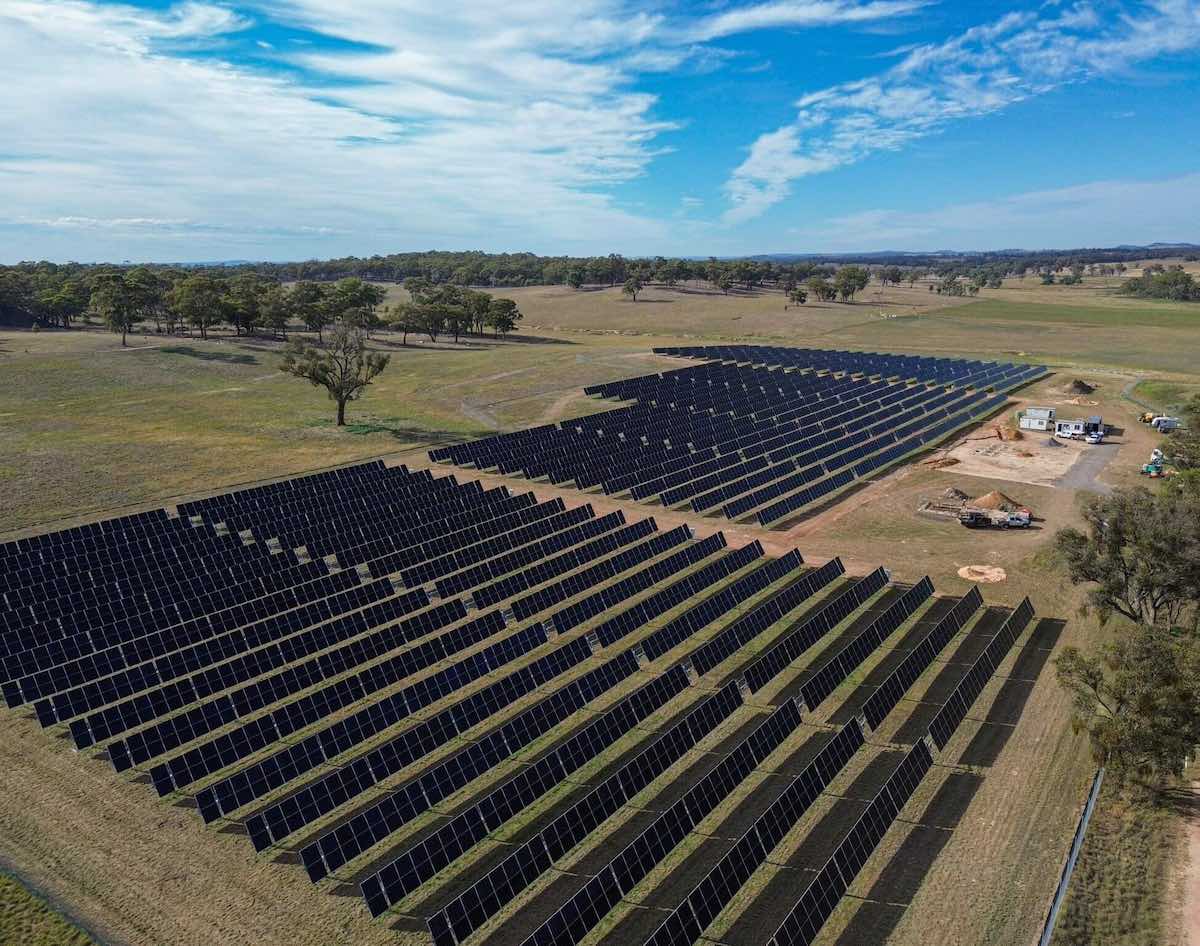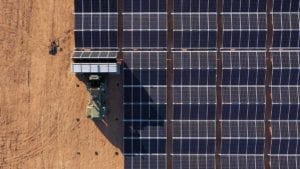It’s only taken 16 years but Newstead, a tiny town in the bougie triangle of central Victoria’s spa district, finally has its community solar and battery.
“We were only teenagers when we started and now we’re old people,” says Newstead Renewables convenor and birdwatcher, Geoff Park.
“Back in 2008 we had a community summit where people in our community were keen to do something in the renewable energy space. At the time they didn’t know what that was or what it looked like, but it sparked a discussion that it would be really good to do something.”
Today, that vision comes to life in the form of a 3 megawatt (MW) solar farm and 5 megawatt hour (MWh) battery, which is one of the new DC-coupled installations which means the battery and solar farm are one unit rather than two separate entities.
Each local household that signs up will be allocated a certain amount of power from the $8 million project, which is owned and operated by Flow Power, at a price around 30c/kWh.
Flow Power owns another DC-coupled solar-battery project, the Berri farm in South Australia which has a 5.8 MW solar farm coupled with a 6.7 MWh battery, all switched on last year.
Park says that while Newstead residents might be able to find cheaper power offers, the 30c/kWh deal is likely to be the cheapest for truly green power available to that location on the market today.
Flow Power wants to use the Newstead project as a demonstration that it can roll out for other communities in Australia, says CEO Matthew van der Linden.
Both Park and van der Linden point to the Newstead solar battery as an example of how to build the kind of renewable energy projects Australia needs – medium-scale that can lean on distribution networks rather than requiring the build out of new transmission lines, and which don’t upset the neighbours.
“We need some pretty significant shifts and in my view this method, where the community is often seen in the market as a barrier, this is a great example of where it’s not and the community is the instigator,” van der Linden says.
Park says the goal from the start was to give locals access to locally generated, affordable green energy without rupturing the community in the process – as is happening a short drive away to the east in Colbinabbin where some residents are vehemently opposing Venn Energy’s 350 MW solar farm.
Hard fight to build it
What the Newstead Community Energy Project is not, is community owned, however.
The cost of building the project was much too high for a small community of 500 homes to bear. And as a comparatively small project, no one outside the town wanted to back it.
And as recently as 2016, the economics for the original plan for a 10 MW solar farm didn’t stack up.
About six years ago the Newstead Renewables organisation looked at a variety of models for community ownership and even with a hard-won $1 million grant from the state government, full or even part funding the $8 million project was unachievable.
And this is where Flow Power came in, via a national tender, to build, operate and sell the power back to the community.
But that’s not to say community ownership models won’t be possible in future.
To the west, the Ballarat Energy Network is working to find out whether a community-owned microgrid for the town might be feasible.
The benefits to the community are green power that offers pricing which rewards use during peak generation and disincentivises use during peak time; an app that shows households exactly how the project is performing, in much the same way as an app for household solar and batteries works; and a small community benefit fund of $50,000 over 10 years.








